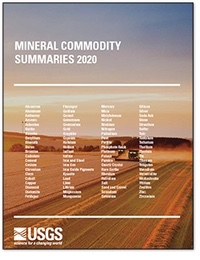The release of the 2021 presidential federal budget proposal earlier this week held some important news on the critical minerals front.
Following on the heels of the creation of the U.S. Nuclear Fuels Working Group (NFWG), which President Donald Trump had announced in the summer of last year “to develop recommendations for reviving and expanding domestic nuclear fuel production,”the President’s budget proposes $150 million per year over the next ten years for the creation of a U.S. Uranium reserve.
Traditionally, Uranium – primarily known for its energy applications, which have placed it under the purview of the Department of Energy – has not been much of a focal point for ARPN. Developments over the past few years, not least the inclusion of Uranium in the Department of Interior’s 2018 critical minerals list, have changed that — for good reason.
Critical for a variety of U.S. defense needs, energy production, and other industries, USGS noted in its 2018 technical input document for the critical minerals list that while DoE inventory was meeting most defense needs in the short term “U.S. sourced uranium will be needed in the future to meet defense requirements that, according to international agreements, must be free from peaceful use restrictions.”
Moreover, the agency stated that while Uranium was also critical in “ensuring a reliable supply of fuel for the 99 nuclear power reactors that supply about 20 percent of U.S. electricity, (…) [o]nly 8 percent of uranium loaded into U.S. nuclear power reactors in 2016 was of U.S. origin; the remaining 92 percent was imported Uranium.”
According to the Office of Nuclear Energy,
“The new program will help to reestablish the nation’s nuclear fuel supply chain through the domestic production and conversion of uranium. The reserve is expected to support the operation of at least two U.S. uranium mines and will ensure there is a backup supply of uranium in the event of a significant market disruption that prevents entities from acquiring fuel. NE would begin the procurement process for the reserve in FY21.”
Of course inclusion of a Uranium reserve in the Presidential Budget is only the first step, and implementation of the proposal is subject to Congressional approval. However, the move gives a clear indication of the Administration’s strategic focus — which from a critical minerals perspective is an encouraging development.
For more on Uranium, see geologist and ARPN expert panel member Ned Mamula’s recent four-piece series for Capital Research Center, “Russia’s Uranium Gambit: An Underappreciated Energy Source”





